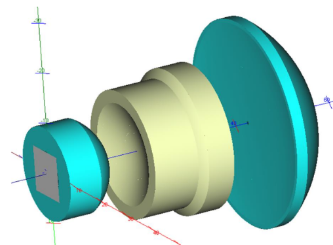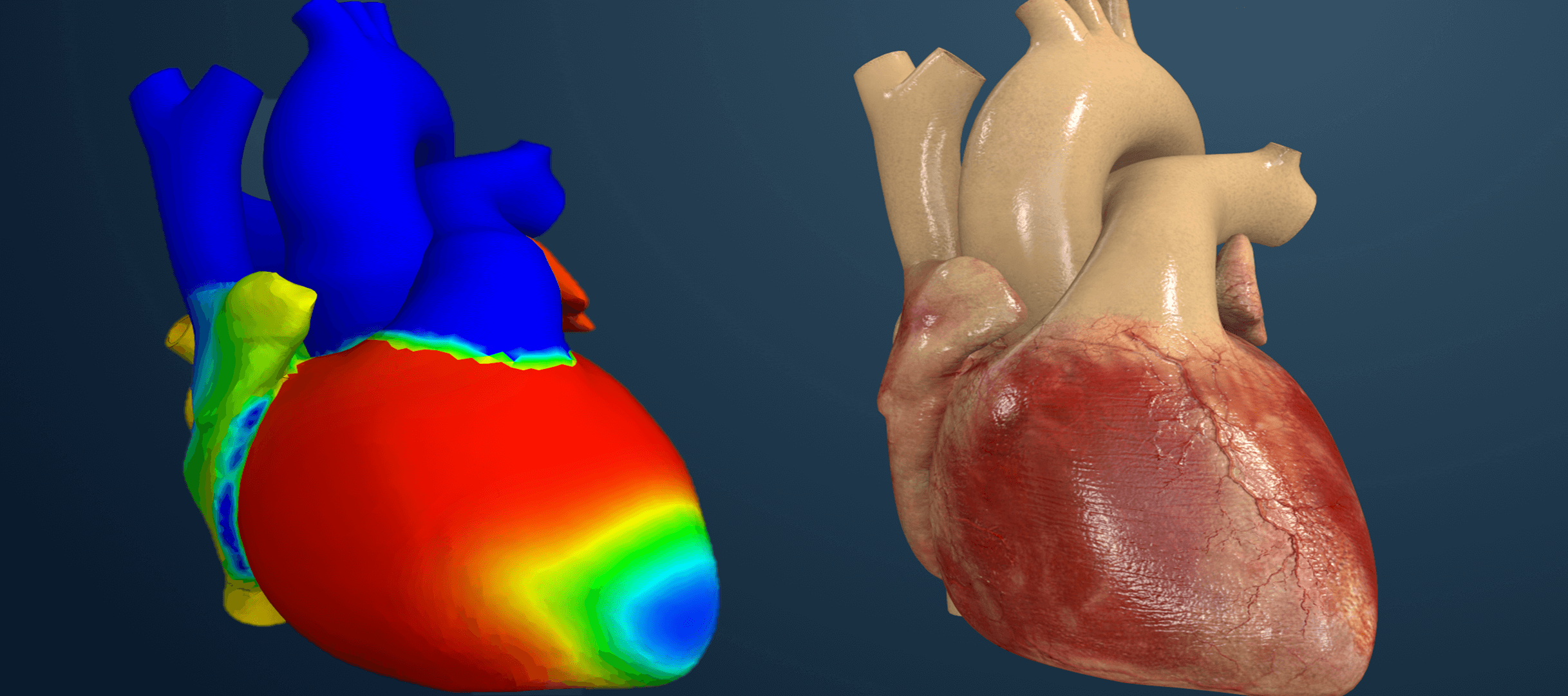Innovating with Light: Advanced Optical Solutions for Automotive, Medical, and Photonic Systems

- Niharika
- October 6, 2024
The rapidly evolving optical industry demands cutting-edge systems with exceptional precision and accuracy. As the market for these advanced solutions grows, engineers and manufacturers must swiftly introduce unique and affordable lighting technologies. With the rise of virtual prototyping and digital twins, the capability to meticulously design, simulate, analyze and optimize light behaviour is paramount. Combining Synopsys’ optical software suite of LightTools, CODE V, LucidShape, and RSoft makes it possible to create a diverse range of optical systems for industries like automotive, aerospace, telecommunications, and healthcare. These powerful tools streamline the development process, reducing reliance on expensive physical prototypes and minimizing risks.
Automotive Optical Solutions
Autonomous driving technology (ADS) and advanced driver assistance systems (ADAS) are revolutionizing the automotive industry. These systems require sophisticated lighting solutions, including pixel headlights, high and low beam lamps, tail lights, indicators, and head-up displays, to enhance safety and reduce driver distractions.
Beyond these external components, dashboard illumination, light guides, and interior lighting are crucial elements of a modern vehicle. To ensure optimal performance, it’s essential not only to design the system and analyze light distribution but also to visualize the system under various lighting conditions and conduct on-road simulations to evaluate its real-world behavior.

Imaging Lenses Design
The lens design is the foundation of numerous optical systems, including cameras, projection displays, medical instrumentation, space and defence technologies, and microlithographic lenses for imaging intricate patterns on computer chips. Optimizing key features like wavefront variance, modulation transfer function (MTF), and coupling efficiency is preeminent in creating high-performance imaging systems.

Analyzing stray light and simulating ghost images arising from total internal reflections is crucial for understanding potential image degradation. Additionally, factors like lens element weight, cost analysis, system alignment, and interactive tolerancing help assess the impact of manufacturing variations on system performance, ensuring the delivery of an optimal as-built optical system.
Medical Instrumentation
By mastering the fabrication of optical and photonic devices, we can pave the way for innovative medical solutions that revolutionize healthcare. Biological sensors are designed to analyze the optical characteristics of biological samples, determine their molecular composition, aid in disease diagnosis, and track drug delivery.
Metal lens used in endoscopes and optical coherence tomography (OCT) offer advantages such as miniaturization and improved imaging capabilities. Additionally, reflector cups for surgical lights must adhere to stringent illuminance distribution regulations to ensure optimal illumination and patient safety.
Silicon Photonic Systems
Semiconductor lasers are fundamental for modern optical communication systems, enabling high-speed data transmission over long distances. Efficient fiber coupling, achieved through carefully designing fibers, couplers, and coupling lenses, is critical for minimizing optical losses. Modulators, including electro-optic, thermo-optic, and carrier modulators, enable the control and manipulation of light signals.
LiDAR systems, which utilize laser technology for ranging and detection, are gaining prominence in applications like autonomous vehicles and robotics. On-chip LiDAR systems, incorporating components like transmitters, phased arrays, and multi-physics utilities, offer advantages in size and integration.

Synopsys’ comprehensive suite of optical solutions provides unparalleled capabilities for design, visualization, and simulation. As the demand for advanced optical technologies continues to grow, Synopsys’ solutions are poised to play a vital role in driving future innovations.
Synopsys’ comprehensive optical solutions suite provides unparalleled design, visualization, and simulation capabilities. As the demand for advanced optical technologies continues to grow, Synopsys’ solutions are poised to play a vital role in driving future innovations.

- Niharika
- October 6, 2024
Innovating with Light: Advanced Optical Solutions for Automotive, Medical, and Photonic Systems
The rapidly evolving optical industry demands cutting-edge systems with exceptional precision and accuracy. As the market for these advanced solutions grows, engineers and manufacturers must swiftly introduce unique and affordable lighting technologies. With the rise of virtual prototyping and digital twins, the capability to meticulously design, simulate, analyze and optimize light behaviour is paramount. Combining Synopsys’ optical software suite of LightTools, CODE V, LucidShape, and RSoft makes it possible to create a diverse range of optical systems for industries like automotive, aerospace, telecommunications, and healthcare. These powerful tools streamline the development process, reducing reliance on expensive physical prototypes and minimizing risks.
Automotive Optical Solutions
Autonomous driving technology (ADS) and advanced driver assistance systems (ADAS) are revolutionizing the automotive industry. These systems require sophisticated lighting solutions, including pixel headlights, high and low beam lamps, tail lights, indicators, and head-up displays, to enhance safety and reduce driver distractions.
Beyond these external components, dashboard illumination, light guides, and interior lighting are crucial elements of a modern vehicle. To ensure optimal performance, it’s essential not only to design the system and analyze light distribution but also to visualize the system under various lighting conditions and conduct on-road simulations to evaluate its real-world behavior.

Imaging Lenses Design
The lens design is the foundation of numerous optical systems, including cameras, projection displays, medical instrumentation, space and defence technologies, and microlithographic lenses for imaging intricate patterns on computer chips. Optimizing key features like wavefront variance, modulation transfer function (MTF), and coupling efficiency is preeminent in creating high-performance imaging systems.

Analyzing stray light and simulating ghost images arising from total internal reflections is crucial for understanding potential image degradation. Additionally, factors like lens element weight, cost analysis, system alignment, and interactive tolerancing help assess the impact of manufacturing variations on system performance, ensuring the delivery of an optimal as-built optical system.
Medical Instrumentation
By mastering the fabrication of optical and photonic devices, we can pave the way for innovative medical solutions that revolutionize healthcare. Biological sensors are designed to analyze the optical characteristics of biological samples, determine their molecular composition, aid in disease diagnosis, and track drug delivery.
Metal lens used in endoscopes and optical coherence tomography (OCT) offer advantages such as miniaturization and improved imaging capabilities. Additionally, reflector cups for surgical lights must adhere to stringent illuminance distribution regulations to ensure optimal illumination and patient safety.
Silicon Photonic Systems
Semiconductor lasers are fundamental for modern optical communication systems, enabling high-speed data transmission over long distances. Efficient fiber coupling, achieved through carefully designing fibers, couplers, and coupling lenses, is critical for minimizing optical losses. Modulators, including electro-optic, thermo-optic, and carrier modulators, enable the control and manipulation of light signals.
LiDAR systems, which utilize laser technology for ranging and detection, are gaining prominence in applications like autonomous vehicles and robotics. On-chip LiDAR systems, incorporating components like transmitters, phased arrays, and multi-physics utilities, offer advantages in size and integration.

Synopsys’ comprehensive suite of optical solutions provides unparalleled capabilities for design, visualization, and simulation. As the demand for advanced optical technologies continues to grow, Synopsys’ solutions are poised to play a vital role in driving future innovations.
Synopsys’ comprehensive optical solutions suite provides unparalleled design, visualization, and simulation capabilities. As the demand for advanced optical technologies continues to grow, Synopsys’ solutions are poised to play a vital role in driving future innovations.








